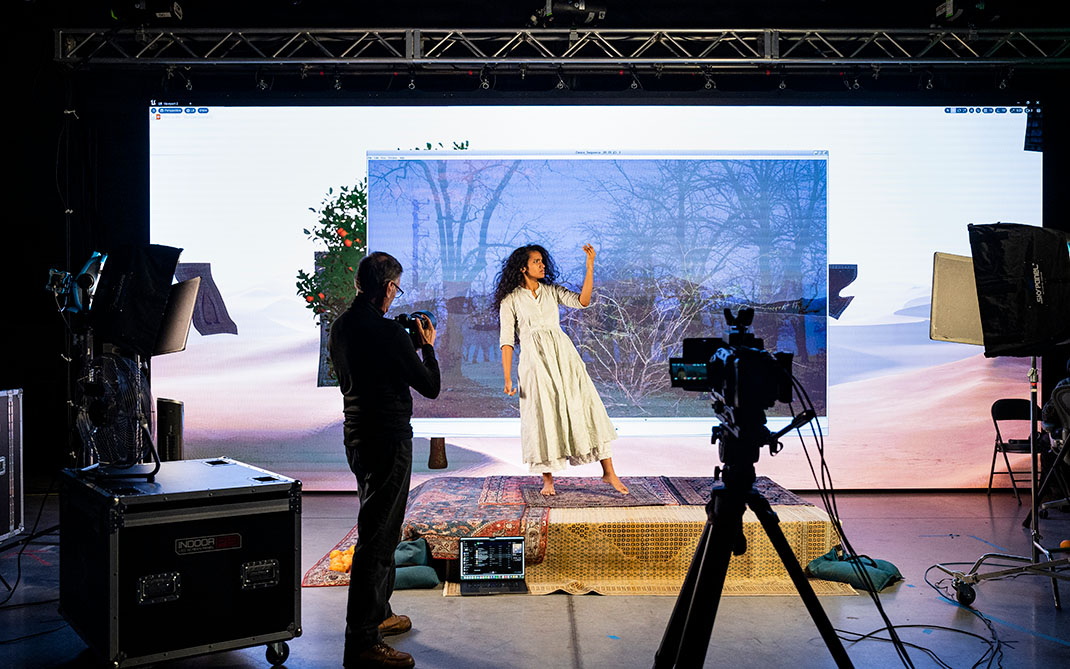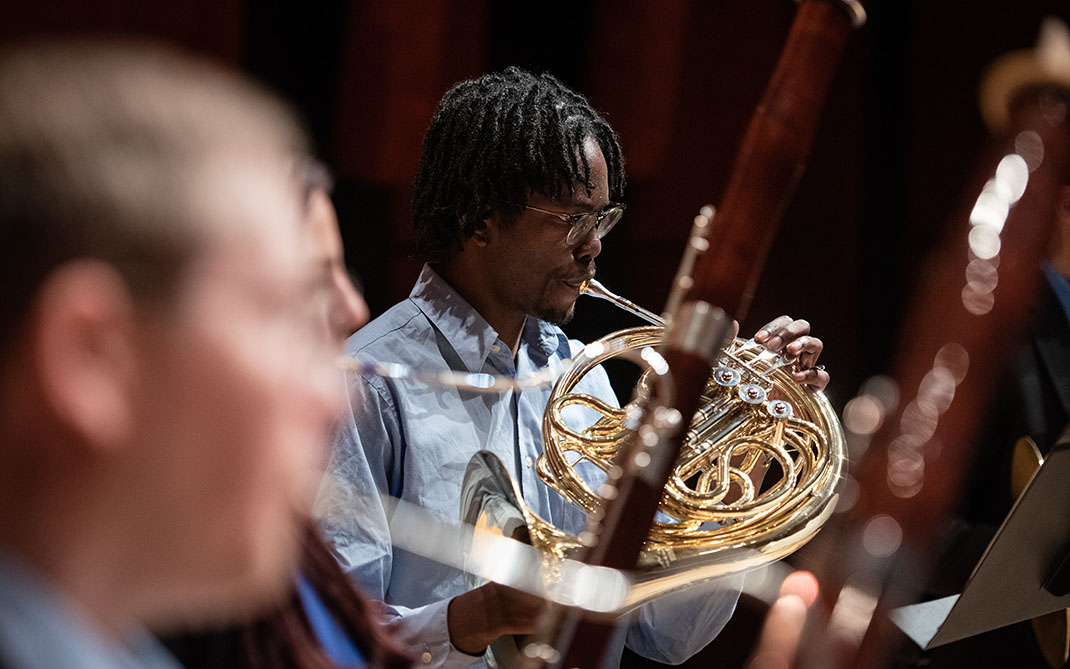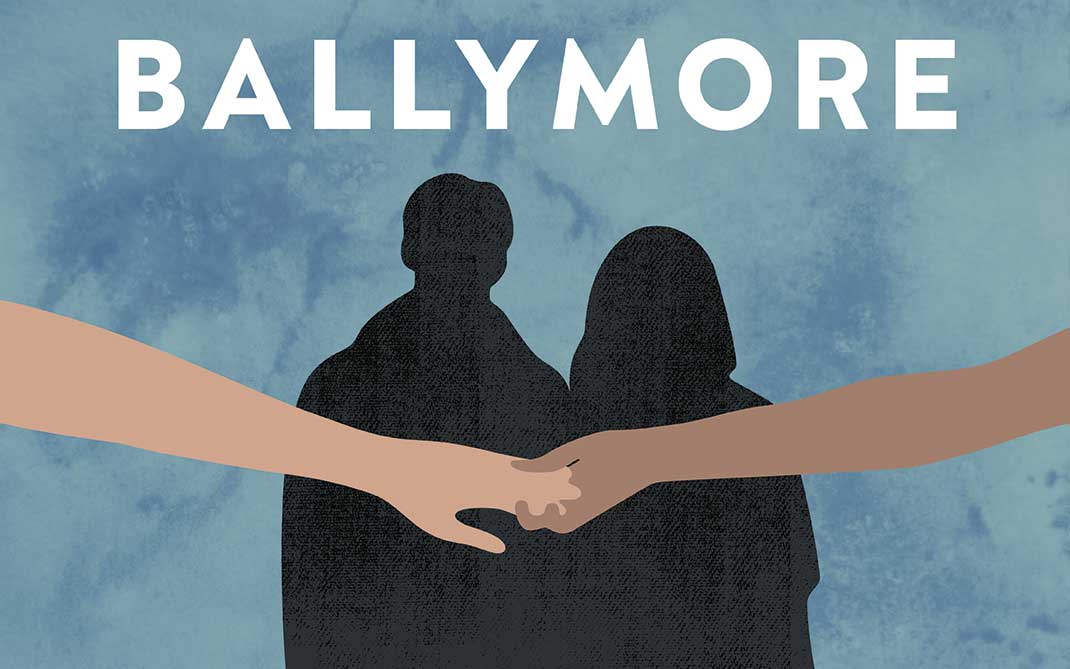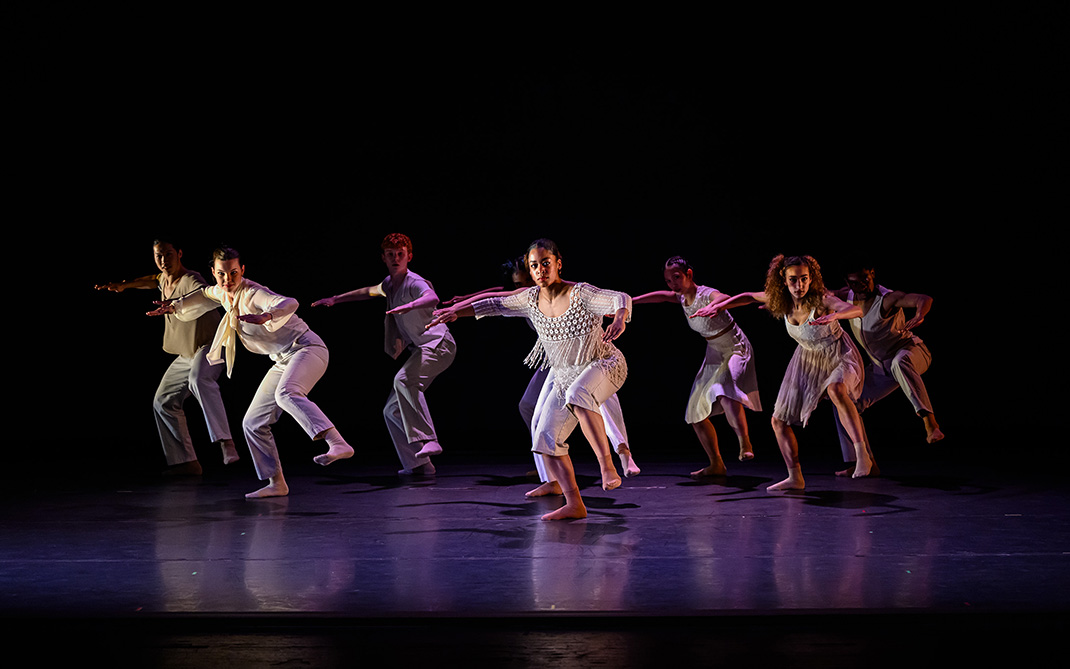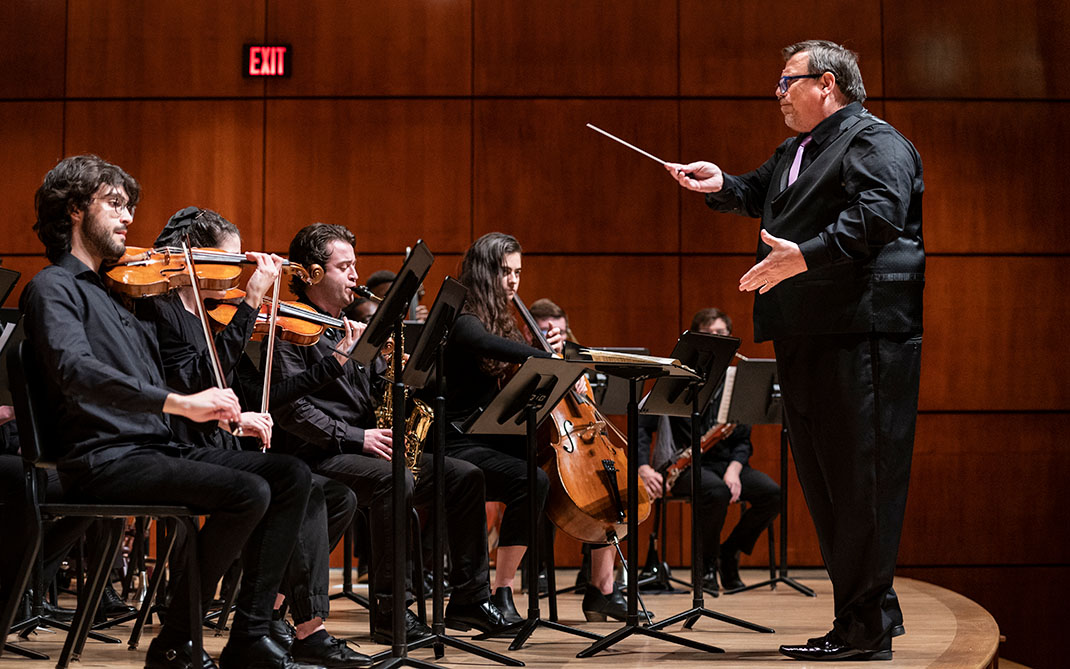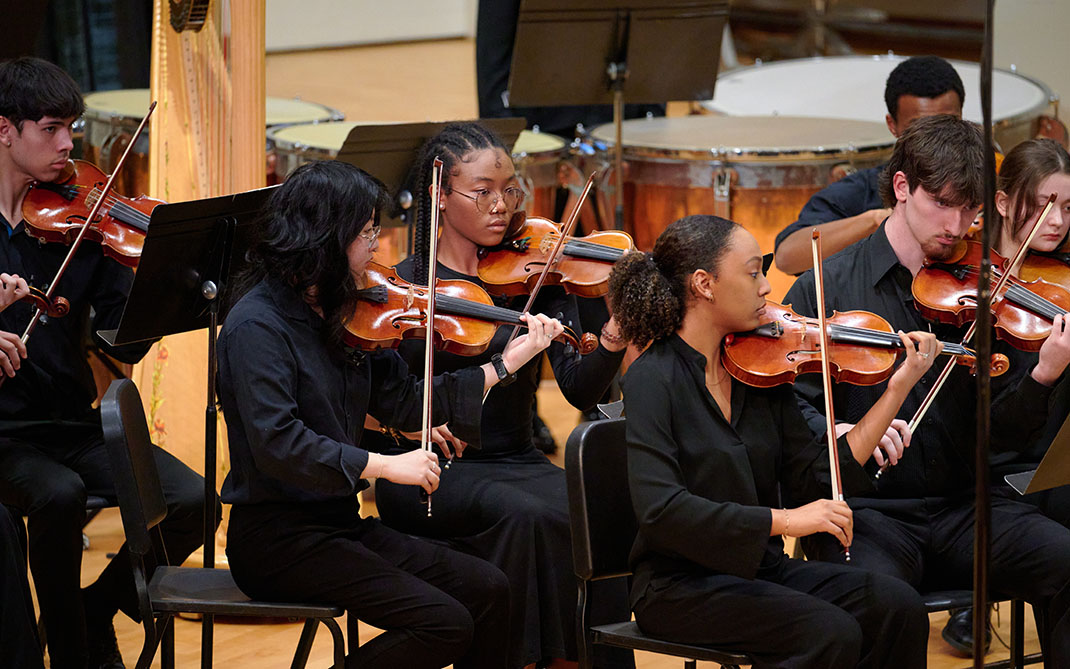Our Core Institutional Values
Good morning. I’m proud to share something very close to my heart, and to the hearts of all who work here: our first-ever core institutional values statement.
Many universities, nonprofits, and corporations have values statements. But too often they’re drafted, finalized, announced, shelved, and forgotten – much like strategic plans. That’s not the case at UNCSA. We launched our strategic plan in 2015 to achieve a clear set of goals over a five-year period, and we’ve used it religiously to determine our priorities, inform our actions, measure our progress, and advance our mission.
But we later realized that we missed an important, fundamental step along the way: a clear articulation of deeply held beliefs, or values, that define who we are and what we stand for as a diversified workforce dedicated to public service and student success.
Our first employee engagement survey in the fall of 2016 revealed the oversight, along with many other suggestions of ways to improve our organizational culture. In response to that feedback, I established the Quality Workplace Committee with Jim DeCristo as Chair, and I charged the committee to ensure that UNCSA will attract, develop, and retain an exemplary workforce inspired by a shared sense of mission, meaning, and purpose.
Jim and his committee began their work with a campus-wide survey that asked, basically, what do you value about working here? We got back a list of hundreds of words, and in several group meetings we narrowed it down to a dozen or so similar concepts, and finally boiled it all down to five words we work by as Fighting Pickles: Community, Collaboration, Imagination, Integrity and (my personal favorite) Grit.
Now I’d like to share the full statement and examples that illustrate the many ways we embody these values.
Our first core institutional value is Community. We embrace diversity and inclusivity to promote mutual trust, respect, and a sense of belonging. We are invested in the success of others, and treat our colleagues with openness and kindness.
I’ve said before, and I affirm here today: the University of North Carolina School of the Arts has always been an inclusive campus where people of all beliefs, identities, ethnicities, experiences, and perspectives are celebrated and encouraged to be themselves.
A temporary installation outside of Hanes Commons last fall made a moving and memorable statement about the strength and richness of our diversity. Film faculty member Joanne Moore and her students worked with Student Affairs to host the UNITY Project, a global interactive public art project created in 2016 as a response to the divisiveness and negative rhetoric in American politics. The project consists of 32 posts arranged in a circle, each marked with identifiers unique to the host city or community. At UNCSA, the identifiers included “I am an undergraduate student,” “I speak more than one language,” and “I have experienced food insecurity” along with a myriad of other ways we label ourselves along cultural, racial, and socioeconomic divides. Participants armed with a colorful ball of yarn began at a central pole that was labeled “I am an artist” and made their way around and across the circle, wrapping the yarn around each post that reflected an aspect of their identity. The yarns of each individual intertwined with the others’ to create a web of interconnectedness. At the end of three days, we had a beautiful tapestry, and saw that for all our differences, we’re all connected by something, and it's our diversity that builds a strong and vibrant community.
Another example of community is the campus support provided to Clay Bloodworth, a film student who sustained life-threatening injuries in a head-on collision in late September. With two broken femurs, three broken vertebrae, and several broken ribs, Clay was hospitalized locally in the critical care unit for weeks. Our Student Affairs staff – particularly Case Manager Laurel Donley and Assistant Dean Joe Rick – provided an extraordinary level of support for Clay, and for his parents who travelled from Florida to be with him. Laurel and Joe acted like a satellite family. They were at the hospital on a daily basis, helped coordinate housing and transportation assistance for his parents, navigated the medical leave process, and kept the campus informed about his condition and progress. Eventually Clay was transferred to a medical facility back home, where his progress was nothing short of miraculous. I’m happy to report that Clay is back with us this semester – and you can catch his second-year film project at the Winter Film Screening tomorrow night. Student Affairs and the School of Filmmaking continue to support Clay, and are committed to his success as a talented aspiring filmmaker.
That’s what community means at UNCSA.
It also reflects our second shared value, Collaboration. We foster a caring and collegial team mindset across departments and disciplines. We work to fulfill a shared mission that impacts the lives of our students and enriches our society. We commit to showing up for our colleagues and learning from others.
UNCSA is primed for collaboration, because success in the creative industries depends on it. One of the campus community’s most beloved collaborators was the late Bruno Louchouarn, who we lost last summer to cancer. Bruno was an associate professor of interdisciplinary studies in the Division of Liberal Arts, a researcher for the Center for Design Innovation (opens in new tab), and taught courses in the School of Filmmaking and the School of Design and Production.
A cognitive scientist and award-winning composer whose music has been performed internationally, he collaborated twice with Dean of Dance Susan Jaffe, composing music for “Carmina Terra,” which premiered at Spring Dance in April 2018 and for “Metallurgy,” which premiered at Winter Dance in February 2015 and later was performed at the Alvin Ailey Theater in New York City.
“My collaborations with Bruno made me a better choreographer and a better person,” Susan says. “He was so nimble, open and ready for anything as a composer, he made me more open in my work.”
Provost David English says Bruno’s experiential, collaborative style of teaching was a perfect fit for our conservatory setting, and his classes were among our most sought-after electives.
Bruno was of course, married to Corey Madden, and one of their most recent collaborations, “And So We Walked,” premiered in April 2017 at Hanesbrands Theatre. Directed by Corey with sound design by Bruno, the one-woman play was produced in Portland, Oregon last spring, garnering national attention.
We’re so grateful and fortunate that Bruno lives on through his work.
Another great example of collaboration is the success of our strategic plan, which has been a coordinated, multi-year effort to meet numerous ambitious goals, and has required sustained focus by a broad spectrum of stakeholders to move it forward. We could never have achieved so much progress in so little time (measured in higher ed years) without seamless collaboration among the administration, faculty, and staff in each of our schools and departments.
It literally has taken a village to achieve so many of our goals and aspirations. We’ve launched the Choreographic Institute, the Media and Emerging Technology Lab, and UNCSA Presents. We piloted a first-year experience for undergraduate students and ushered it through the approval process. The new First Year Seminar course, “On Being a Contemporary Artist” is a collaborative, interdisciplinary, project-based seminar designed for students to engage in an exploration of art, life, and contemporary culture through experiencing, thinking, talking, making, reflecting, and writing. We completed master plans for the Stevens Center, main campus, and the Strollway extension. Our efforts to enhance our recruitment and enrollment management resulted in an almost 28 percent increase in applications for Fall 2018, with a three-year average increase of more than 35 percent. And we’ve raised nearly $44M and counting in campaign contributions. I want to thank everyone in this room for your role in making all this (and much more) possible.
Our third core value is Imagination. We dream big even when we must start small. We seek novel ideas and fresh perspectives to overcome organizational challenges. We’re not afraid to buck convention.
Here's a great example of imagination at work: Just months from the inception of our Media and Emerging Technology Lab (METL for short), Susan Ruskin and Ryan Schmaltz launched the inaugural Future of Reality Summit this past November. Designed to initiate cross-field discussion, the summit attracted top industry leaders from Paramount Pictures, Tribeca Film Institute, IBM Academy of Technology, Unity Technologies Labs, Oculus (which named UNCSA a “NextGen” school), IDEO, D-BOX Technologies and more.
The first day of the Summit featured an immersive arcade where you could learn to trim hedges in VR, (courtesy of the Lowe’s Corporation), experience the sensation of being buried alive, or perform a virtual hysterectomy—only at UNCSA, I kept telling myself. The second day included TED-style talks and panels moderated by Kent Bye, who publishes Voices of VR podcast interviews featuring the pioneering game developers, enthusiasts and technologists driving virtual reality.
Yair Landau, founder of Mass Animation and former president of Sony Pictures Digital Entertainment, was a panelist at the summit. He described it as “one of the most interesting and diverse panels I have ever participated in. A uniquely qualified global set of artists expressing broad and differing visions using AR and VR as their palette. It's especially cool that UNCSA was able to achieve something so many others are only talking about."
You’ll also see strong imagination in the work of a part-time video production producer on the Strategic Communications team. If you’ve spent any time on our website hopefully you’ve seen some of the engaging videos we’ve added over the past few years. They’re in large part due to the ingenuity of Neil Soffer and his collaboration with Digital Content Manager Hannah Callaway. When we were building our award-winning website, it was clear that video storytelling had to be a fundamental pillar of our content strategy. But we didn’t have funding to hire a full-time video producer. So, thanks to a Fifth-year Kenan Fellowship, we hired Neil, who leaned on his undergraduate education in the School of Filmmaking and his creativity and technical skill to design our video production blueprint. Neil established the position, invented processes for working across campus, and identified the equipment and other resources we would need. Luckily for us, Neil, who is from Israel, decided to stay at UNCSA for his MFA, and he’s been able to grow our video production strategy for another two years. Alas, he graduates again in May and is off to L.A., but we’re grateful for his talent and his imagination, and foresee a very bright future for him.
Our fourth shared institutional value is Integrity. We hold ourselves to the highest personal and professional standards. We model ethical conduct, operate with transparency, and strive for excellence in all we do.
The most important thing we do here is teach, and each year we honor faculty members who exhibit the highest personal and professional standards with our Excellence in Teaching Awards. As Provost David English has said “Nowhere is the quality of instruction more important than it is here in our intensive arts conservatory. Our faculty do so much more than teach their subject matter: They nurture the students’ passion for the arts, and they inspire and instill a dedication and work ethic necessary for a successful career and a meaningful life.”
Perhaps most meaningful to the recipients, they are nominated by their students, former students and colleagues. We recently announced this year’s recipients, and I’m proud to recognize them today. They are Janine Hawley from Drama, Kate Douglass from high school academics, Eric Rimes from Design and Production, Jason Romney from Design and Production, John Roberts from Film, and Trish Casey from Dance. Congratulations and bravo to each of you!
Our final core institutional value is Grit. We persist and persevere to achieve our long-term goals. We look for ways to improve process and productivity. We prioritize actions that move us forward.
I’ve said it many times: this is the grittiest place I know. And few of my colleagues have more grit than Betsy Towns, associate professor of art history in our Division of Liberal Arts. Last year, in addition to her teaching assignment, Betsy served as interim director of the Center for Design Innovation, the multi-campus research center located in the Innovation Quarter. But she wasn’t just CDI’s interim leader, she was – and still is – its champion.
After some recent leadership changes, CDI was suffering from an identity crisis and some of us struggled to understand its connection to this campus and its relevance to what we do here. But Betsy knew, and she had a vision for CDI as a portal for lifelong learning encouraging all creative potentials; as a bridge connecting Piedmont Triad’s manufacturing past to its discovery economy future; and as a platform supporting the diversity of bright minds and ideas in North Carolina.
Jim DeCristo, who is now serving as CDI’s interim director, credits Betsy with pushing the reset button at CDI, stabilizing an organization that had seen too much transition, and refocusing its purpose as a thought leader at the nexus of creativity, design thinking and advanced technology research. Employing the critical thinking skills and creativity she instills in her students -- along with a substantial measure of perseverance -- Betsy developed a breakthrough new studio structure at CDI, and collaborated with partners at Winston-Salem State University to launch the interdisciplinary design studios that will tackle some of the biggest problems facing the region, including equity, mobility, scientific literacy, education and environmental resilience.
Betsy handed over the CDI reigns to Jim, but she is still involved with CDI, as leader of the Higher Education Design Studio, which recognizes that the design process offers powerful tools for high-impact learning and brings diverse students, faculty, and professionals together into transdisciplinary research and design of performances, exhibitions, multimedia publications, and more that contribute to public knowledge and literacy.
Thank you, Betsy, for your passion and your grit.
Academe certainly rewards those with grit, especially when dealing with the cumbersome processes and bureaucracy inherent to public institutions. The grit it requires to manage a campus construction project has become legendary, and our challenges with the Alex Ewing Performance Place and Semans Administration and Academic Building renovations have highlighted the grit of many among us, particularly our University Architect, Chris Placco, Associate Vice Chancellor of Facilities Management Steve Martin, and our Managing Director of Performance Facilities, Wiley Hausam.
On the Performance Place project, they persevered in the face of major setbacks like bids coming in millions of dollars over budget after everyone had been moved out, then having to rethink the entire design and rebid the project all over again while scheduling performances at venues all over town and simultaneously launching a new presenting series to revitalize the Stevens Center. It will all pay off in the end, but it takes grit not to become overwhelmed with frustration over the daily challenges and stay focused on the end result.
I’ll close by reiterating what I said before: these values we hold dear aren’t meant merely as words to live on our website. Community, collaboration, imagination, integrity and grit are words to work by, live by, and lead by.
I’m certain our founders acted upon similar principles when they created North Carolina School of the Arts, and I’m committed to uphold our core institutional values as we continue to build on their vision and fulfill the mission they set for us.
Perhaps someday soon the Values Statement will be scratched on the wall, somewhere, neatly and in artistic style, along with the words of founder Terry Sanford: “This institution is unorthodox and heretical.”
As a board, you exhibit these values in the many ways you support this university, and I thank each and every one of you for your values-centered, enlightened leadership.
UNCSA Board of Trustees address
February 8, 2019
